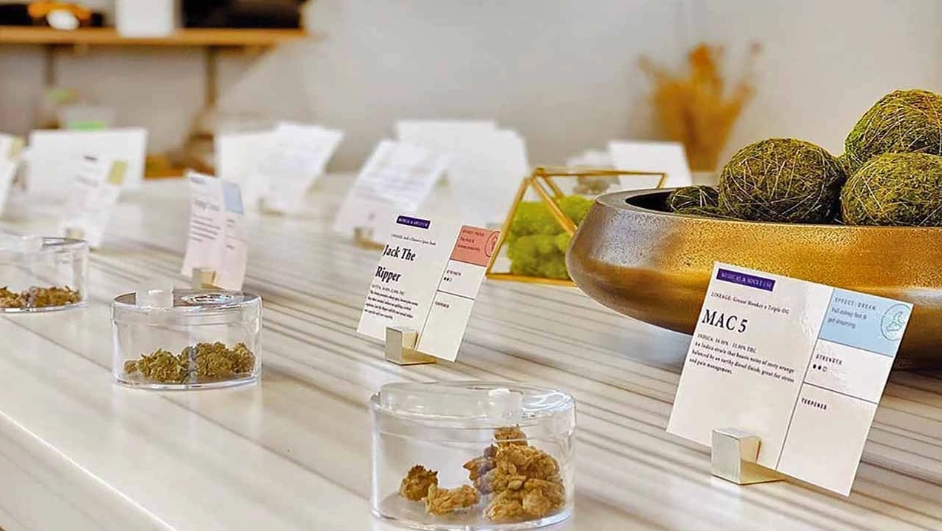Business
Inaccurate strain names, poor labeling hinder marijuana industry, study shows

Marijuana consumers have long suspected that strains aren’t accurately named.
For example, Blue Dream flower from Colorado can vary drastically in taste, flavor, effect and appearance from Oregon flower with the same name.
In fact, the strain can vary drastically from two different marijuana retailers on the same block.
Now, there’s a study that proves it.
Researchers from the University of Colorado Boulder and Seattle-based cannabis commerce platform Leafly published a study in the journal PLOS One in May that found cannabis labels “do not consistently align with the observed chemical diversity” of the product.
Not only that, but the researchers found the labels to be inadequate to communicate to consumers the full range of cannabinoids and terpenes, which could be useful in helping customers better understand the plant and make more informed decisions about purchases and consumption.
“It’s like if your cereal box only showed calories and fat and nothing else,” the report’s co-author, Brian Keegan, an assistant professor of information science at the University of Colorado Boulder, said in a news release.
“We as consumers need to be pushing for more information. If we do that, the industry will respond.”
Sativa and indica doesn’t work
The study analyzed nearly 90,000 samples of cannabis across six states with legal marijuana markets.
It found that cannabis flower typically falls into three categories that are high in the following terpene combinations:
- Caryophyllene and limonene.
- Myrcene and pinene.
- Terpinolene and myrcene.
That data is an invitation to the industry to move away from these clusters, which are not exhaustive of what people can metabolize or what growers can produce, according to Keegan.
The three categories also don’t fit into the overly simplistic naming scheme of sativa, indica or hybrid.
“It’s not an effective way to brand these products,” Keegan said in an interview with MJBizDaily.
“Everything is a hybrid these days.”
Keegan said he believes this study is the largest analysis of cannabis data to date.
He said the marijuana industry could learn from the data revealed in the survey and adopt best practices used in other industries to disclose “what people are putting in their bodies.”
The lab perspective
Although adding terpene and minor cannabinoid testing costs could be a hard sell for cannabis companies that are already operating with increasingly shrinking margins, Keegan said that if more businesses in the industry were to add the tests, the costs likely would come down.
Lev Spivak-Bindorf, co-founder and chief science officer for Ann Arbor, Michigan, cannabis testing laboratory PSI Labs, submitted 7,200 data points, including terpenes and cannabinoids from flower, to the study.
His lab was one of six in six separate state markets to participate. Data scientists at Leafly vetted the labs, according to Spivak-Bindorf.
“What makes this study so valuable is it’s the largest survey thus far of regulated modern cannabinoid profiles,” he said.
Spivak-Bindorf pointed out that the reason those three terpene clusters mentioned above were so dominant is because the industry is driven by a focus on THC potency and breeding for cannabinoids, not terpenes.
Strains such as Chemdawg, which has a high THC content, are so popular in current flower genetics that its diesel fuel-like terpene combination shows up frequently in lab tests.
But moving away from a focus on potency among consumers could help to add more diversity to the terpenes that show up in lab tests, Spivak-Bindorf said.
“If you want all the flavors and smells, the many colors of the rainbow, you’re can’t just have THC,” he said. “You can’t have everything be potent.”
Beyond that, Spivak-Bindorf said the trend of cannabis lab shopping, where growers shop around for a lab that will give them favorable test results, including boosted THC numbers, is also a trend he’d like to see go away.
“It’s a challenge we’re all facing,” he added. “It’s about transparency. That’s the foundation of good science.”
Building brand trust
When she walks into a marijuana dispensary Kim Stuck’s first question about flower is “what does the terpene profile look like?”
“I usually get, ‘I don’t know,’” said Stuck, founder of cannabis consultancy Allay Consulting, which has an office in Portland, Oregon.
“Indica and sativa is lazy marketing and doesn’t make sense unless you know the other components of the flower.”
Stuck has been a member of the cannabis standards committee for standards organization ASTM since 2017.
She would like to see the marijuana industry do better in educating cannabis consumers, including adopting standardization among labels that include information beyond THC or CBD content.
For example, putting a QR code on products could help consumers to evaluate the terpene and cannabinoid profile and make more informed decisions.
The scannable code would also prevent the labels from taking up too much space on the product packaging.
With that, the sativa-indica and strain-name convention could “completely go away, and it almost doesn’t matter,” she said.
Instead, Stuck would shop based on a terpene such as limonene or a minor cannabinoid such as CBN.
As consumers become more mature and understand what they want, she expects the industry will see a change in how cannabis consumers shop.
Stuck doesn’t own a cannabis brand, but she said that’s what she would do to build trust among the customer base.
“There would be an upfront cost, but it would be worth it for your brand,” she said.
Source: https://mjbizdaily.com/inaccurate-strain-names-poor-labeling-hinder-marijuana-industry/